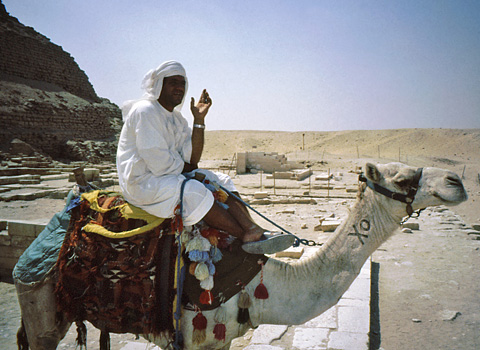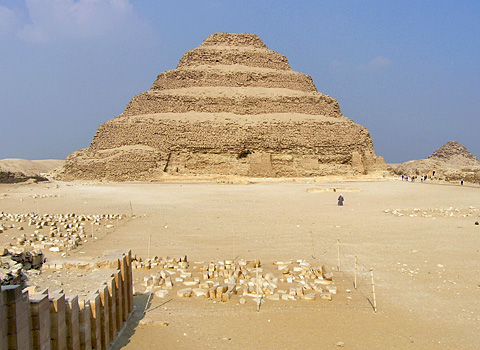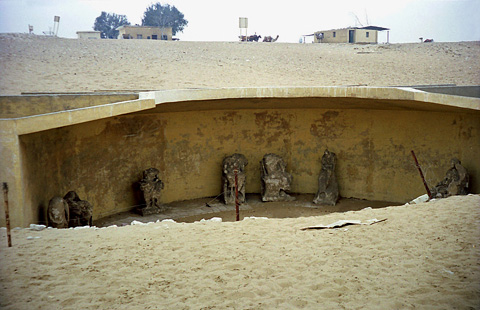Introduction to Saqqara

The plateau contains a great number of massive tombs belonging to members of the first royal families and high officials from Dynasty I onwards. There are two large underground structures at Saqqara (perhaps once having a superstructure) which archaeologists believe may be tombs of Dynasty II kings Hetepsekhemwy and Nynetjer because seal impressions of those kings were found there. The name of the first ruler of unified Egypt, Narmer, whose tomb is at Abydos, is also known at Saqqara and later Dynasty I tombs are attested at the site. The development of the Early Dynastic mastaba tombs for the Memphite elite in the Saqqara region were undoubtedly prototypes for the largest of the royal monuments here. Many of the Early Dynastic rulers appeared to have funerary monuments at both Saqqara and Abydos and there is much debate between archaeologists about which site contained the actual burials of these rulers. Recent opinion however, seems to have shifted away from regarding the Saqqara tombs as being royal at all and they are now being seen as tombs of the wealthy elite of the period.
The most famous monument at Saqqara is the step pyramid complex of Djoser (Dynasty III) which was thought to be the first large funerary monument constructed in stone. Much of its architecture is based on the natural materials which had previously been used in the construction of royal tombs and temples. This is the monument most people come to visit. Djoser’s successor, Sekhemkhet, attempted to construct his pyramid complex nearby, it was abandoned soon after it was begun and is now known as the ‘buried pyramid’.


Many important officials resided in Memphis during the New Kingdom and although the kings of the period are known to have been buried at Thebes, many of the elite constructed elaborate tombs at Saqqara. Many of these tombs, to the south of the Unas causeway were recorded by Karl Lepsius during the mid-19th century and have been rediscovered since 1975 by a joint British and Dutch expedition. In this area there are many very fine tombs of late Dynasty XVIII and early Dynasty XIX especially that of General Horemheb’s private tomb.
To the north-west of the Step Pyramid are the animal cemeteries, including tomb galleries of mummified baboons, ibis and falcons as well as the ‘Serapeum’ – the underground galleries in which the sacred Apis Bulls were buried. From the Late Period onwards there were vast numbers of animals, including dogs or jackals and cats being embalmed and buried in huge catacombs.

Near the resthouse towards the Serapeum there is a curious semicircle of Greek statues known as the ‘Philosopher’s Circle’. These statues were set up by Ptolemy I as a wayside shrine and the best-preserved figures include Plato, Protagoras and Homer.

No comments:
Post a Comment